NIL
Quinn Ewers loses nearly $5 million by entering 2025 NFL Draft vs. entering NCAA Transfer Portal
Texas QB Quinn Ewers was a much lower selection than many thought he’d someday be in the NFL Draft. That ended up costing him a lot of money, especially within the debate of whether he should’ve been playing next season in the NCAA or in the NFL. Ewers, the No. 231 overall pick in the […]
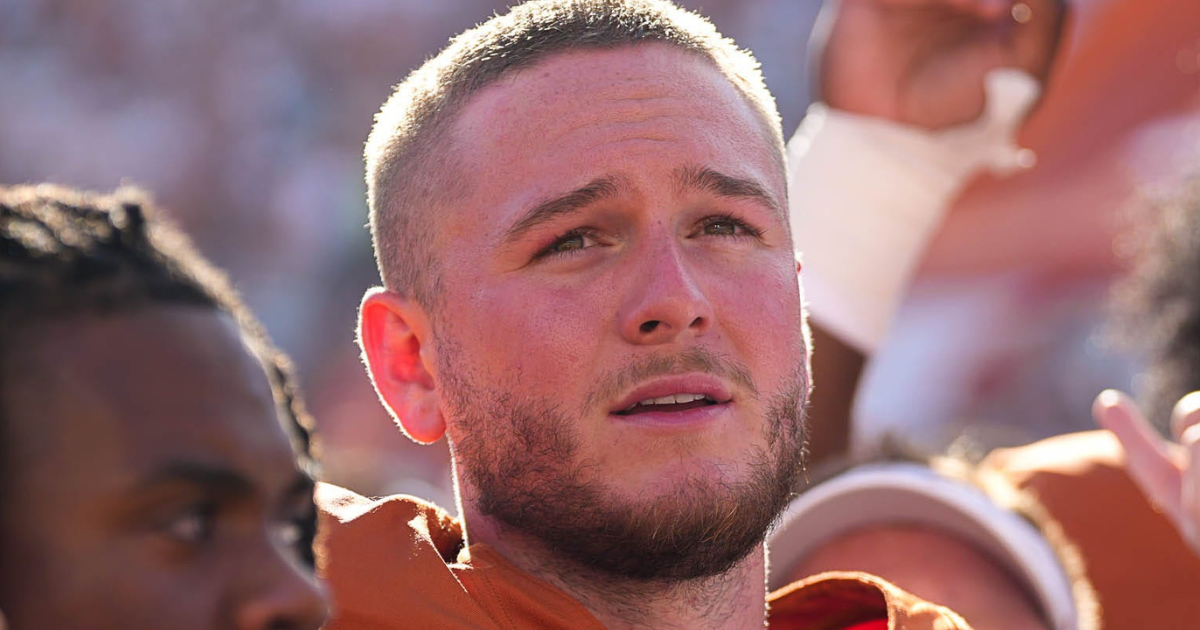
Texas QB Quinn Ewers was a much lower selection than many thought he’d someday be in the NFL Draft. That ended up costing him a lot of money, especially within the debate of whether he should’ve been playing next season in the NCAA or in the NFL.
Ewers, the No. 231 overall pick in the seventh round by the Miami Dolphins in the 2025 NFL Draft, will, per reporting by Spotrac, make $4.33 million over his four-year rookie deal with the franchise. That, according to reports by experts like On3’s Pete Nakos, will be a significant loss as compared to what he could have made by entering the NCAA Transfer Portal.
It was clear after last season that, one way or another, Ewers would not be back on The 40 Acres. He played well during his career with the Longhorns but it appeared to be time for Arch Manning for the program. That made it a decision for him between transferring elsewhere in college or entering the draft and going pro.
Ewers was already one of the highest-valued athletes in all of college sports, let alone college football, per his valuation. That, according to Nakos at On3 before their season had even ended in the College Football Playoff, was going to earn him a chance at a deal worth as much as $6 million from teams apparently tampering with him to get him into the portal for his final year of eligibility.
Now, even with his selection in the final round of this year’s draft on Saturday, Ewers is looking at just over $1 million a year on his rookie contract with Miami. Assuming he doesn’t have the professional career that would allow him to make up for that with another, bigger contract later on, that’s a significant difference in incoming profit for him over the next few years.
That has led to said conversation about what was the ‘right’ decision for Ewers. On3’s Ari Wasserman gave his take on it while Inside Texas’ Joe Cook did as well. Both opinions had understanding of the choice he made as, in the end, loyalty to Texas and a desire to make it to the NFL obviously meant more to him.
“Ewers had opportunities to play college football in 2025. Ewers had the chance to earn more in 2025 than he would have on his seventh round rookie deal. But there was something he viewed as being more valuable than an extra million or two,” Cook wrote on Sunday. “When it was time for him to get selected, there were two words he wanted to hear when national television announced the Miami Dolphins’ seventh-round pick – ‘Quarterback. Texas.’”
Even in this era, money isn’t always everything when it comes to decisions like this one, for example, by Ewers. Still, it’s of note considering what it reportedly will have cost him to be a pro quarterback now rather than, loyalty or not, a college quarterback for one more season instead.
NIL
Memphis Football Coach Explains NIL and Transfer Portal Challenges | Chris Vernon Show
Memphis football coach Ryan Silverfield joins today’s episode of the Chris Vernon Show to talk all things recruiting, transfer portal, and NIL in today’s college football landscape.If you have any questions about how things work for a head coach in college football, he answers them.#chrisvernonshow#collegefootball#cfb#memphistigers#memphis#transferportal#nil Link 0
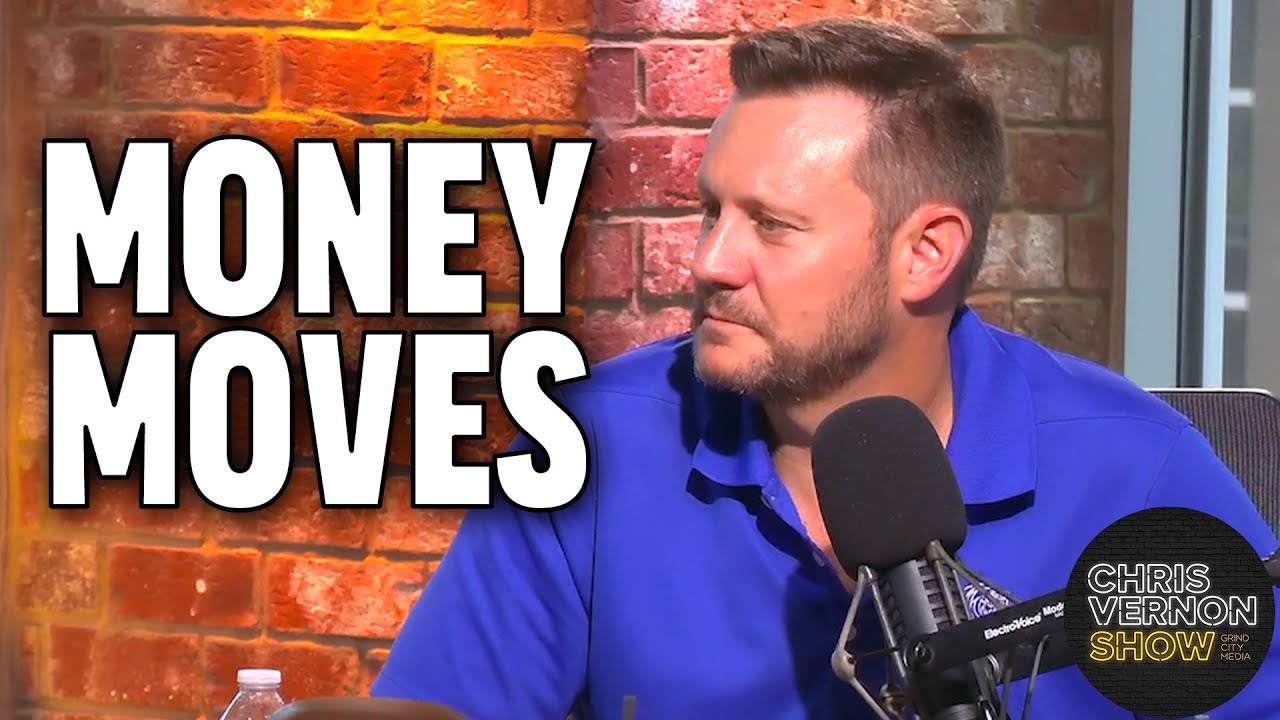
Memphis football coach Ryan Silverfield joins today’s episode of the Chris Vernon Show to talk all things recruiting, transfer portal, and NIL in today’s college football landscape.
If you have any questions about how things work for a head coach in college football, he answers them.
#chrisvernonshow
#collegefootball
#cfb
#memphistigers
#memphis
#transferportal
#nil
NIL
John Calipari gets 100% real on ‘expectation’ that comes with lucrative NIL numbers
The post John Calipari gets 100% real on ‘expectation’ that comes with lucrative NIL numbers appeared first on ClutchPoints. The NIL era has accelerated recruiting into becoming a bidding war on what schools offer the most money in NIL. The numbers circulating in college basketball recently have been massive, and one of the game’s best […]
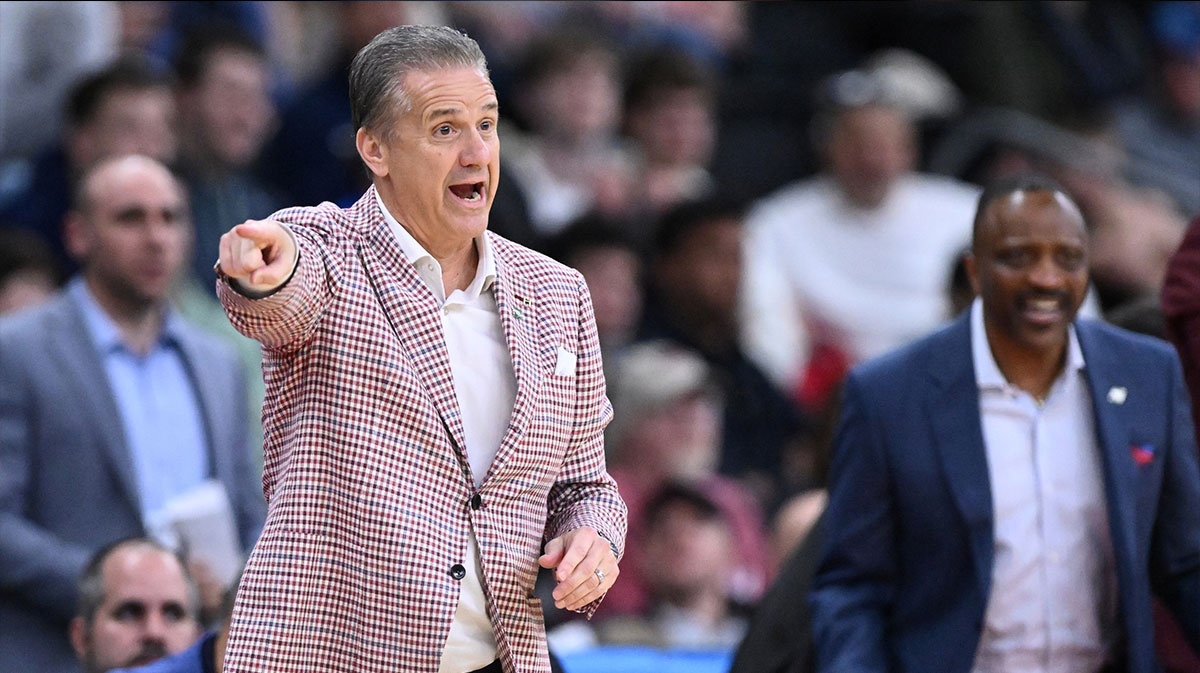
The post John Calipari gets 100% real on ‘expectation’ that comes with lucrative NIL numbers appeared first on ClutchPoints.
The NIL era has accelerated recruiting into becoming a bidding war on what schools offer the most money in NIL. The numbers circulating in college basketball recently have been massive, and one of the game’s best recruiters, Arkansas’ John Calipari, recently spoke up about how that shapes the expectations for transfers and recruits who come into their new schools.
Advertisement
As one of the best recruiters in college basketball and potentially all college sports, Calipari has firsthand experience with NIL. While NIL has not changed Calipari’s status as an elite recruiter, it has emboldened him even more, bringing in top recruits at Kentucky and Arkansas. However, big-time players come with big-time money, and Calipari admitted that he and his staff tread lightly even more now due to that aspect of recruiting.
Calipari was on an episode of Golic & Golic on FanDuel Sports Network this week and elaborated on how they navigate this new landscape.
“Did you see the interview with the Kansas State player (Coleman Hawkins) after last year’s season, where he cried? Cried. ‘They paid me $2 million and I couldn’t live up to it.’ There’s one thing about being the star on any team,” Calipari said. “You guys did it, that star makes the most and, wow, but the most is expected from them. So, some guys in college basketball this year are making between $ 3 million and $5 million. Teams are spending 20 million on rosters. Now there’s an expectation. You better win a national title, or you better be a guy, Calipari said.
“If one of you paid a college player four million, would you expect that $4 million player to drag us to the Final Four?”
Advertisement
In some cases, the risk might not outweigh the reward when programs like Arkansas basketball offer millions of dollars to recruits. Calipari continued to elaborate on how this is impacting the current recruiting landscape.
“That’s different than a seasoned professional dealing with it. So, trying to keep that away from what we do, but social media brings it right back,” Calipari said. “This guy’s making $3 million, and this is the best he is. So, you know, it’s — I think we gotta protect our kids, but some of it, you can’t. You want to be paid a lot. You’re now a professional. You need to perform.”
Thanks to the House settlement being approved, some NIL numbers should be curbed, and at least the field in college sports should be leveled. However, this new era of recruiting is a bidding war, and Calipari and other coaches need to adapt to navigating the potential expectations that come with that.
Related: Fans debate possible NBA-like change in college hoops
Related: LSU’s Flau’jae Johnson gets brutally honest on Angel Reese relationship: ‘We’re not friends’
NIL
There Looks To Be a Lot of Competition in the Front Court for Oklahoma State
STILLWATER – Steve Lutz and Co. are looking to have some success this season in order to try and have some stability with the roster moving forward in this new era of college basketball with NIL and the transfer portal. Now, success doesn’t/won’t always equal a stable roster as there will always be players who are […]
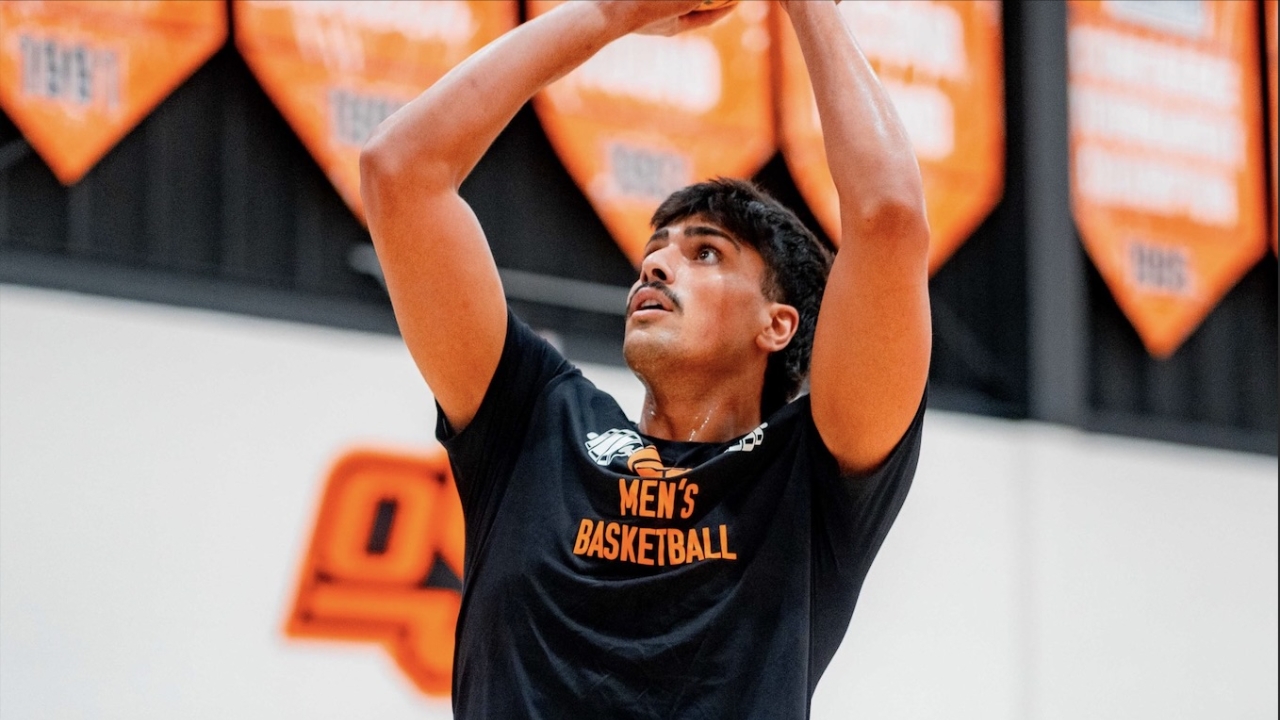
STILLWATER – Steve Lutz and Co. are looking to have some success this season in order to try and have some stability with the roster moving forward in this new era of college basketball with NIL and the transfer portal.
Now, success doesn’t/won’t always equal a stable roster as there will always be players who are either unhappy with their current playing time/money situation, or any other number of factors which will always be there.

Oklahoma State University Athletics
Robert Jennings II against Baylor last year.
As for this year’s roster, it looks nearly completely different from last year’s as only two scholarship players returned in Robert Jennings II and Andrija Vukovich. There have been seven transfers, three high school players and an older international freshman added. In keeping things with last year and this year different, this year’s roster has more youth on it. So, hopefully with success and wins comes more players willing to stick around after the season, allowing Lutz and Co. to create some stability.
Now, a good chunk of the youth is at the forward and center positions. Lutz brought in two high school bigs in Ben Ahmed and Mekhi Ragland, international freshman Lefteris Mantzoukis and transfer F/C Parsa Fallah to go with Vukovic who has improved physically from last year.
I’ve talked to someone close to the program who believes Fallah to be the main big right now based on experience, fitness and talent. But this summer will hopefully make it a much tougher position as the high school players get into better shape and used to the speed and physicality of the college game.

Oklahoma State Athletics
Fallah in practice.
Fallah checks in at 6-9, 260 pounds and is in Stillwater by the way of Oregon State. He averaged nearly 13 points per game as a junior for the Beavers on 60% shooting from the floor, with four rebounds and one assist per game.
“Parsa’s been great,” said Lutz. “He’s been one of those guys that’s tried to lead. He has an infectious personality, he doesn’t ever have a bad day when he walks in the room, he brings the energy level up. He adds to the room and he’s great. He needs to get a little bit better shape right now, but we expect big things from him. But I’m telling you, I really think that there’s gonna be a lot of competition along that front line. I really do because those two freshman, man, they don’t know what they’re doing yet, but there’s a lot of talent and a lot of ability. Then like you say, Mili [Vukovic] is coming back for his second year, so he’s lightyears ahead of where he was last year.”
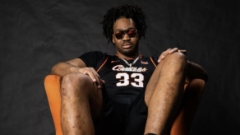
Pokes Report
Ahmed on his official visit to Stillwater.
Both Ahmed and Ragland are roughly 6-10 and need to trim up, put on some muscle and get stronger. No one really knows what Mantzoukas can/will bring to the table as he won’t be in Stillwater for the foreseeable future to due student visas being paused. OSU is working with the state government and Washington to get it cleared up.
NIL
John Calipari gets real on lucrative NIL ‘expectations’
The NIL era has accelerated recruiting into becoming a bidding war on what schools offer the most money in NIL. The numbers circulating in college basketball recently have been massive, and one of the game’s best recruiters, Arkansas’ John Calipari, recently spoke up about how that shapes the expectations for transfers and recruits who come […]

The NIL era has accelerated recruiting into becoming a bidding war on what schools offer the most money in NIL. The numbers circulating in college basketball recently have been massive, and one of the game’s best recruiters, Arkansas’ John Calipari, recently spoke up about how that shapes the expectations for transfers and recruits who come into their new schools.
As one of the best recruiters in college basketball and potentially all college sports, Calipari has firsthand experience with NIL. While NIL has not changed Calipari’s status as an elite recruiter, it has emboldened him even more, bringing in top recruits at Kentucky and Arkansas. However, big-time players come with big-time money, and Calipari admitted that he and his staff tread lightly even more now due to that aspect of recruiting.
Calipari was on an episode of Golic & Golic on FanDuel Sports Network this week and elaborated on how they navigate this new landscape.
“Did you see the interview with the Kansas State player (Coleman Hawkins) after last year’s season, where he cried? Cried. ‘They paid me $2 million and I couldn’t live up to it.’ There’s one thing about being the star on any team,” Calipari said. “You guys did it, that star makes the most and, wow, but the most is expected from them. So, some guys in college basketball this year are making between $ 3 million and $5 million. Teams are spending 20 million on rosters. Now there’s an expectation. You better win a national title, or you better be a guy, Calipari said.
Article Continues Below
“If one of you paid a college player four million, would you expect that $4 million player to drag us to the Final Four?”
In some cases, the risk might not outweigh the reward when programs like Arkansas basketball offer millions of dollars to recruits. Calipari continued to elaborate on how this is impacting the current recruiting landscape.
“That’s different than a seasoned professional dealing with it. So, trying to keep that away from what we do, but social media brings it right back,” Calipari said. “This guy’s making $3 million, and this is the best he is. So, you know, it’s — I think we gotta protect our kids, but some of it, you can’t. You want to be paid a lot. You’re now a professional. You need to perform.”
Thanks to the House settlement being approved, some NIL numbers should be curbed, and at least the field in college sports should be leveled. However, this new era of recruiting is a bidding war, and Calipari and other coaches need to adapt to navigating the potential expectations that come with that.
Jake Faigus graduated from the University of Arizona in 2022 and has had stops at Catena Media, Playmaker, DraftKings, USA Today, Spike Up, and Spotlight Sports Group. He also writes for Sporting News and works at iHeartMedia in Phoenix.
NIL
Jay Jacobs on Auburn facilities, NIL pressure and what still sets the Tigers apart
Former Auburn athletic director Jay Jacobs joined The Auburn Undercover Podcast for his biweekly show for a deep dive into how Auburn built some of the SEC’s best facilities—and why staying competitive now requires more than just bricks and mortar. Jacobs, who led Auburn Athletics from 2005 to 2018, said the evolution of facilities is a story […]

Former Auburn athletic director Jay Jacobs joined The Auburn Undercover Podcast for his biweekly show for a deep dive into how Auburn built some of the SEC’s best facilities—and why staying competitive now requires more than just bricks and mortar.
Jacobs, who led Auburn Athletics from 2005 to 2018, said the evolution of facilities is a story of constant adaptation. “Auburn was the first school in the SEC to have a football building,” he said. “We built that athletic complex in 1989, and at the time nobody else had one. That set the tone for how we’d separate ourselves.”
But in today’s NIL-driven world, Jacobs believes facilities still play a crucial role. “There may be a mindset at some schools that you don’t need to build anymore, just pay NIL and figure it out. But if everyone’s paying NIL, you still need something to separate yourself. That’s where facilities matter.”
Jacobs said recent improvements—from Plainsman Park to Neville Arena—are about more than recruiting athletes. “We’ve all turned our attention to fans. If the fans aren’t there, it’s an empty, hollow place. That atmosphere has to be there for everyone.”
Still, progress isn’t easy. Jacobs recalled pushing for a north end zone project that didn’t gain traction during his tenure. “Obviously I didn’t do a good enough job painting the vision. But thank goodness they’re moving forward with it now.”
When asked about the pressures of NIL, Jacobs didn’t mince words. “I’ve never had a student-athlete demand more money. It’s always been a parent, guardian, or handler. I’ve seen cases where the student-athlete didn’t even know someone was negotiating on their behalf.”
Despite the financial changes in college sports, Jacobs says the Auburn spirit still shines through. “These kids still act like kids. They’re having fun, they’re dancing in the dugout, hanging off the bench. They’re not thinking, ‘How can I get $25,000 more?’ They just love to play.”
Looking ahead, Jacobs acknowledged the challenge of funding athletics once schools begin paying athletes directly as part of the expected House v. NCAA settlement. “Every school is going to have to come up with $20.5 million more, and then it goes up from there. That’s real.”
Yet Jacobs remains optimistic about Auburn’s donor base and approach. “We may not have one mega-donor, but we have a lot of people who care. That’s the Auburn way. Everyone pitches in.”
He closed with a recommendation: a book that’s helped him stay grounded. “It’s called Don’t Give the Enemy a Seat at Your Table by Louie Giglio. Whether you’re a Christian or not, it helps you catch those negative thoughts and think clearly.”
Listen to this episode elsewhere using these links.
APPLE PODCASTS
SPOTIFY
YOUTUBE MUSIC/PODCASTS
NIL
The House v. NCAA settlement explained
For the first 115 years of the NCAA’s existence, college athletes weren’t allowed to earn money from their athletic abilities. The first opportunity arose in the State of California when Governor Gavin Newsom signed a statute into law on September 30, 2019, allowing colleges to refrain from denying student-athletes the opportunity to profit from their […]

For the first 115 years of the NCAA’s existence, college athletes weren’t allowed to earn money from their athletic abilities. The first opportunity arose in the State of California when Governor Gavin Newsom signed a statute into law on September 30, 2019, allowing colleges to refrain from denying student-athletes the opportunity to profit from their name, likeness, or image.
However, it wasn’t until the summer of 2021 that the NCAA changed rules to allow students to profit from their name, image, and likeness — otherwise known as NIL — after the Supreme Court ruled against the governing body.
A combination of school policies and state laws dictates what deals athletes can make. The NCAA has allowed universities to establish guidelines for their athletes in states that do not have laws outlining the parameters for designing NIL deals. Athletes only earned NIL benefits through outside parties, not through universities.
That changed last week on June 6 when Federal Judge Claudia Wilken approved the House v. NCAA settlement, which resolves multiple federal antitrust lawsuits, pays out thousands of former college athletes $2.8 billion in backpay from lost NIL compensation, and establishes a framework for athletic departments to directly pay college athletes for the first time.
Effective July 1, 2025, the agreement establishes a 10-year revenue-sharing model, which will allow schools to distribute up to $20.5 million in name, image, and likeness (NIL) to athletes during the 2025-26 season. This amount is expected to increase over time, potentially reaching up to $32.9 million per school by the 2034–35 academic year.
The men’s basketball roster size increases from 13 to 15 scholarships to be awarded. An equivalency system also allows coaches to award scholarships to more athletes by offering partial awards instead of full ones. For example, rather than 10 players each getting a full basketball scholarship, a team might divide 10 scholarship equivalents among 15 athletes.
Scholarships, which cover tuition, room and board, and other educational expenses, are not included in this cap. Schools can still offer full or partial scholarships to athletes without counting them toward the NIL compensation limit. In fact, the settlement allows schools to allocate up to $2.5 million of their NIL compensation pool toward increasing scholarships and providing additional support to athletes.
NIL payments can still be paid by outside supportive organizations, but if the payment is over $600, it must be justified by submission to a digital clearinghouse managed by Deloitte known as NIL Go in order to establish that third-party deals reflect what the clearinghouse deems is “fair” market value.
St. John’s and the rest of the Big East conference enter this new era of college athletics in an advantageous position over power conferences that prioritize competing in football programs. Most power conference schools are expected to pay out 75% of their revenue-sharing cap to football, with men’s basketball receiving 15%, women’s basketball receiving 5%, and the remaining sports receiving the final 5%.
This will not be a problem for the ten Big East member schools, which either have no football program or an FCS football program that is less costly than their FBS counterparts. Even UConn, which is the only Big East member with an FBS football program, shouldn’t feel pressure to divert much of its cap from its premier basketball programs in order to support football since they aren’t in a power conference and compete independently.
-

 NIL2 weeks ago
NIL2 weeks ago2025 NCAA Softball Tournament Bracket: Women’s College World Series bracket, schedule set
-

 Health6 days ago
Health6 days agoOregon track star wages legal battle against trans athlete policy after medal ceremony protest
-

 College Sports2 weeks ago
College Sports2 weeks agoIU basketball recruiting
-

 Professional Sports7 days ago
Professional Sports7 days ago'I asked Anderson privately'… UFC legend retells secret sparring session between Jon Jones …
-

 Professional Sports7 days ago
Professional Sports7 days agoUFC 316 star storms out of Media Day when asked about bitter feud with Rampage Jackson
-

 Rec Sports2 weeks ago
Rec Sports2 weeks agoScott Barker named to lead CCS basketball • SSentinel.com
-

 Youtube3 weeks ago
Youtube3 weeks agoAnt greets A-Rod & Barry Bonds before Game 3
-

 Rec Sports2 weeks ago
Rec Sports2 weeks agoJ.W. Craft: Investing in Community Through Sports
-

 College Sports2 weeks ago
College Sports2 weeks agoOlympic gymnastics champion Mary Lou Retton facing DUI charge
-

 College Sports1 week ago
College Sports1 week agoOKC’s Mark Daigneault knows what it takes to win championships. His wife has won a ton of them




































